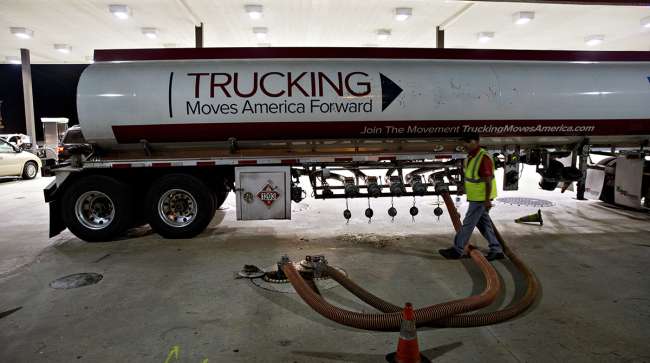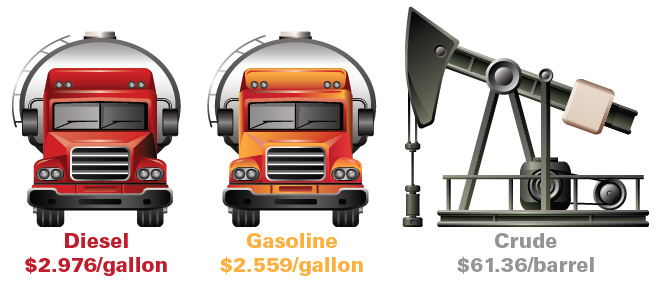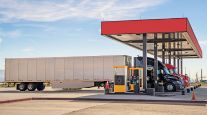Senior Reporter
Diesel Slips 1.6¢ to $2.976 a Gallon

The U.S. average retail price of diesel fell 1.6 cents to $2.976, declining as the price of a barrel of crude slipped to $61 amid analysts’ forecasts that U.S. production would set a record this year.
It marked the fifth consecutive drop for diesel. Prices have fallen 11 cents a gallon since Feb. 5.
Trucking’s main fuel is 41.2 cents a gallon higher than it was a year ago, when the price was $2.564.
The average price of diesel was unchanged in California, at $3.652, but fell in every other region of the country, according to DOE’s Energy Information Administration.
The national average price for regular gasoline fell 0.1 cent to $2.559 a gallon, EIA said. The average is 23.6 cents higher than it was a year ago.
The Oil Price Information Service, however, forecast gasoline prices this driving season — Memorial Day weekend through Labor Day — will be the most expensive since 2014, rising perhaps to $2.79 a gallon nationally.
As diesel fell, a nor’easter struck along portions of the heavily traveled Interstate 95 truck corridor. It was the third such storm in two weeks.
Unlike the previous couple of storms, the National Weather Service reported this nor’easter posed a bigger threat for heavy snow and high winds closer to southeast New England coastal areas (along which I-95 runs).
A Pilot Flying J travel center in North Stonington, Conn., on the coast near the border with Rhode Island was preparing for heavy snow late March 12. A manager on duty said the facility had room for truckers intending to ride out bad weather and with 200 spaces for trucks the site never gets full, and that there was plenty of diesel on hand.
“Connecticut, Rhode Island and Massachusetts got hammered pretty good [by the storm], but these are things you can see coming. So you at least have a little bit of time to get ahead of them and make sure you have enough fuel supply on hand,” Denton Cinquegrana, chief oil analyst at OPIS, a unit of IHS Markit, said March 14.
Meanwhile, oil prices have stabilized in the range of $60 to $64 a barrel, Cinquegrana said, and ultra-low-sulfur diesel futures have come down from February levels.
“For the most part, I still don’t think that there is that catalyst out there that pushes us up over $70 or $80,” which speaks to stable prices, he said. “If you are a fleet [buying diesel], I think that is something you are going to like.”

U.S. oil from shale fields is being marketed in Asia and that has some Organization of Petroleum Exporting Countries concerned, according to Bloomberg News.
While the producer group complied with a pledge to curb output and ease a glut in 2017, U.S. flows that are gaining a bigger slice of the prized Asian market may prompt some nations to boost supplies, said Warren Patterson, a commodities strategist at the Dutch bank. The resulting fallout could drag down crude prices after a rally of more than 40% since June, he told Bloomberg.
U.S. oil production is expected to soar this year.
It will average 10.7 million barrels a day in 2018, which would mark the highest annual average U.S. crude production level, surpassing the previous record of 9.6 million set in 1970. Then it is likely to climb even higher, averaging 11.3 million barrels a day in 2019, EIA forecast.
West Texas Intermediate crude futures on the New York Mercantile Exchange closed at $61.36 per barrel March 12 compared with $62.57 on March. 5.
Coatings supplier PPG pointed to the effect of rising oil prices on its costs.
PPG has seen heightened freight and logistics costs for the past six months due to oil prices increasing nearly 40% over the past nine months, according to a company statement announcing price increases on its coatings used by automakers.
“Any other customer price increases are being handled on an individual basis,” PPG spokesman Michael Millar said. “One component of these costs is higher diesel prices.”



